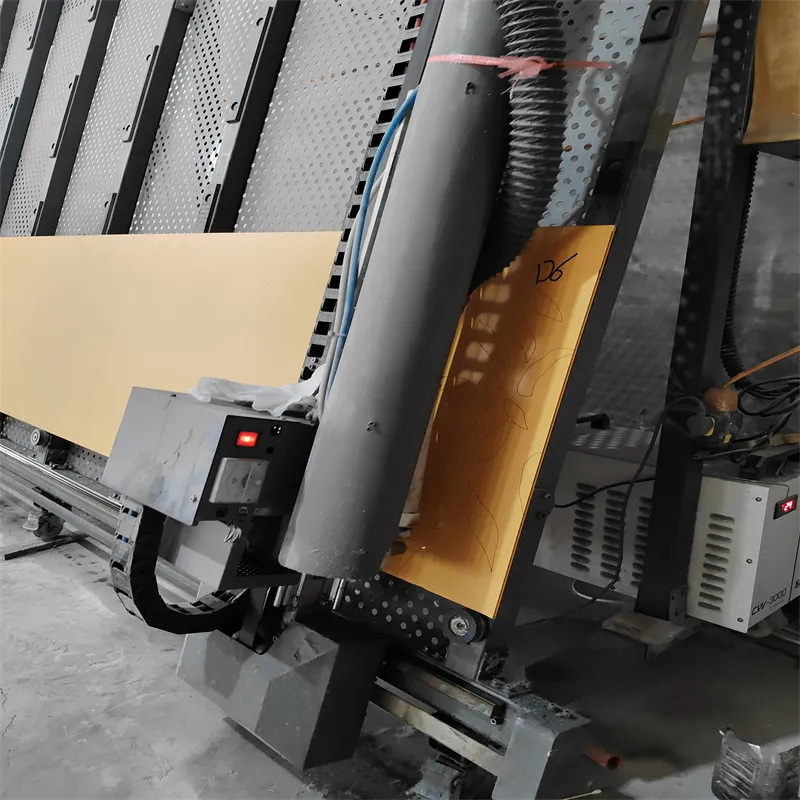Dec . 09, 2024 19:44 Back to list
Techniques for Creating Decorative Patterns on Glass Using Sandblasting
Sandblasting Patterns for Glass An Artistic Dimension
Sandblasting, also known as abrasive blasting, is a technique that utilizes high-speed air to propel fine particles, usually sand or other abrasives, against a surface. This process creates a textured finish, and when applied to glass, it opens a realm of artistic possibilities. Sandblasting patterns for glass not only enhance the aesthetic appeal of glass products but also add functional elements, like privacy and light diffusion. This article explores various techniques, applications, and design considerations in sandblasting patterns for glass.
Understanding the Sandblasting Process
The core of sandblasting involves the careful control of the abrasive particles and the pressure at which they are propelled. The process begins by selecting a glass piece, which could range from windows to decorative panels. A stencil is then created, often out of vinyl or other resistant materials, which defines the areas to be blasted. Integrated into the process is the use of different abrasives—silica, aluminum oxide, glass beads, or even coal slag—each producing a unique texture and finish.
Popular Patterns for Sandblasted Glass
1. Geometric Designs One of the most common styles in sandblasting is geometric patterns, which provide a modern, sleek appearance. Squares, rectangles, and triangles can be combined in various arrangements to create striking visual effects. These patterns can be subtle or bold, depending on the desired level of contrast.
2. Natural Elements Incorporating motifs from nature, such as floral patterns, leaves, and waves, results in a more organic feel. These designs can be intricate or simplistic, allowing for a spectrum of creativity. For instance, a delicate vine pattern could gracefully climb up a glass panel, bringing an outdoor essence indoors.
3. Textured Finishes Rather than specific shapes, some designs focus on creating a textured surface that diffuses light. Patterns resembling frosted glass or etched designs can provide privacy without compromising natural light. These textures can range from soft, misty appearances to more defined etching, offering a versatile addition to any space.
4. Custom Logos and Artwork Businesses often utilize sandblasting to display logos or other branding elements on glass. This personalization not only enhances the professional appearance of a business but also showcases creativity and uniqueness. Custom art pieces, including portraits or abstract designs, can be intricately sandblasted onto glass, making for breathtaking decorative accents.
Applications of Sandblasted Glass
sandblasting patterns for glass

Sandblasted glass is widely used in various applications, enhancing both functional and aesthetic aspects
- Architectural Elements In modern architecture, sandblasted glass is used for windows, doors, partitions, and balustrades. Its ability to provide privacy while still allowing light to pass through makes it ideal for office spaces and homes.
- Decorative Art Many artists experiment with sandblasting on glass to create sculptures and installations. The versatility of glass allows for a wide range of artistic expression, blending traditional techniques with contemporary designs.
- Functional Decor Sandblasted patterns can be used on mirrors, shower doors, and kitchen backsplashes, combining functionality with style. The added texture not only enhances the visual interest of these items but also aids in reducing glare.
Design Considerations
While sandblasting offers numerous creative possibilities, there are essential design considerations to keep in mind. The thickness and type of glass will influence the patterns you can achieve. Furthermore, the design should harmonize with the intended space—too elaborate of a pattern in a small area could overwhelm, while overly simplistic designs in large expanses may lack impact.
Additionally, the intended use of the glass piece should dictate the design. For instance, patterns meant for private areas should prioritize opacity, while those intended for display may focus on intricate detailing.
Conclusion
Sandblasting patterns for glass are a powerful means of artistic expression that combines functionality with beauty. From architectural elements to decorative art, the versatility of sandblasted glass patterns caters to various tastes and preferences. As this technique continues to evolve, it will undoubtedly inspire new trends and innovations in art and design, ensuring its place as a favored method for enhancing glass surfaces.
-
Safety and Style with Premium Laminated Glass Solutions
NewsJun.24,2025
-
Reinvents Security with Premium Wired Glass
NewsJun.24,2025
-
Premium Float Glass Line for Modern Architecture
NewsJun.24,2025
-
Low Emissivity Glass for Energy-Efficient Architecture
NewsJun.24,2025
-
High-Performance Insulated Glass Solutions for Modern Architecture
NewsJun.24,2025
-
Elevates Interior Style with Premium Silver Mirror
NewsJun.24,2025
Related PRODUCTS














